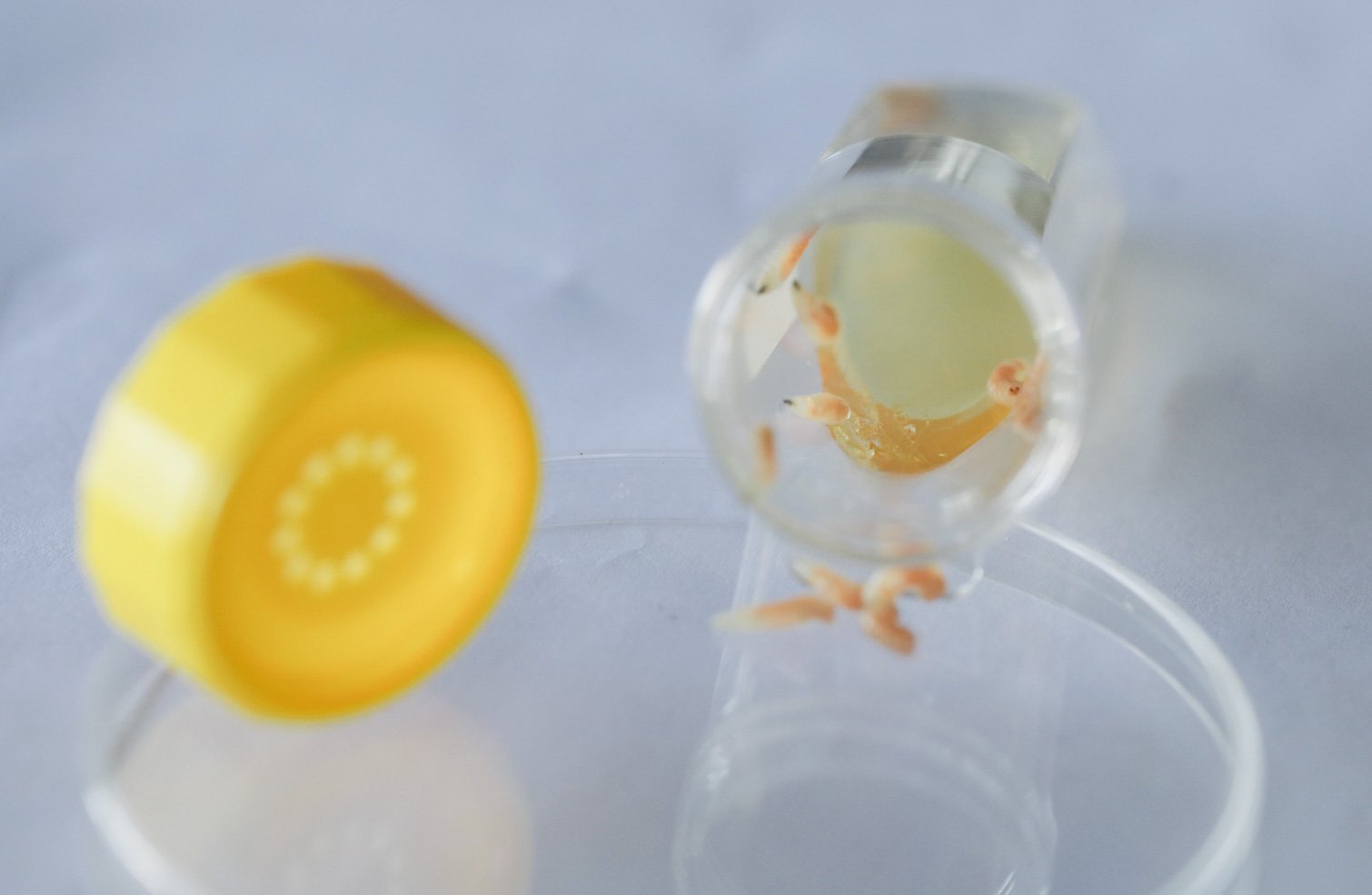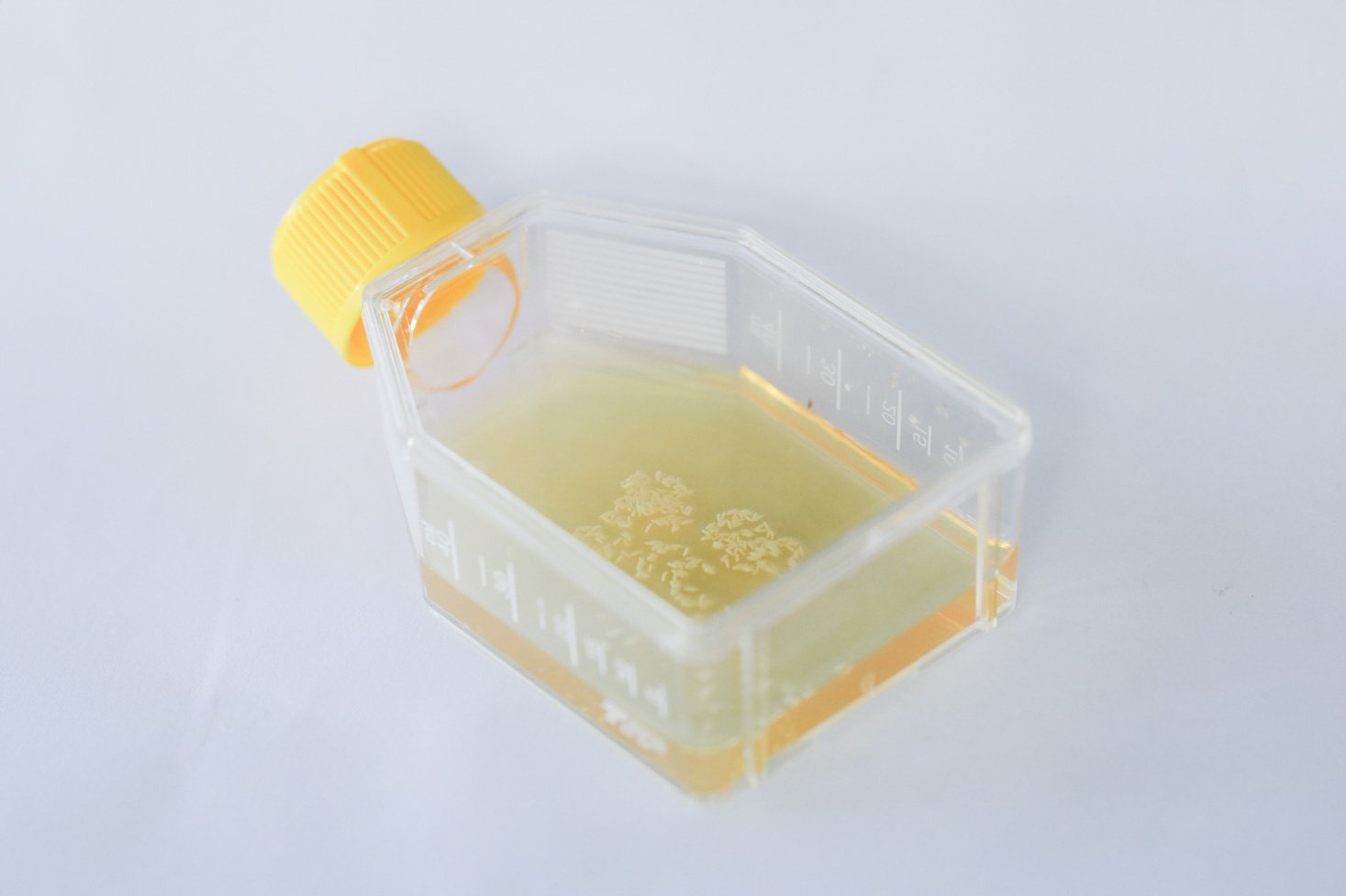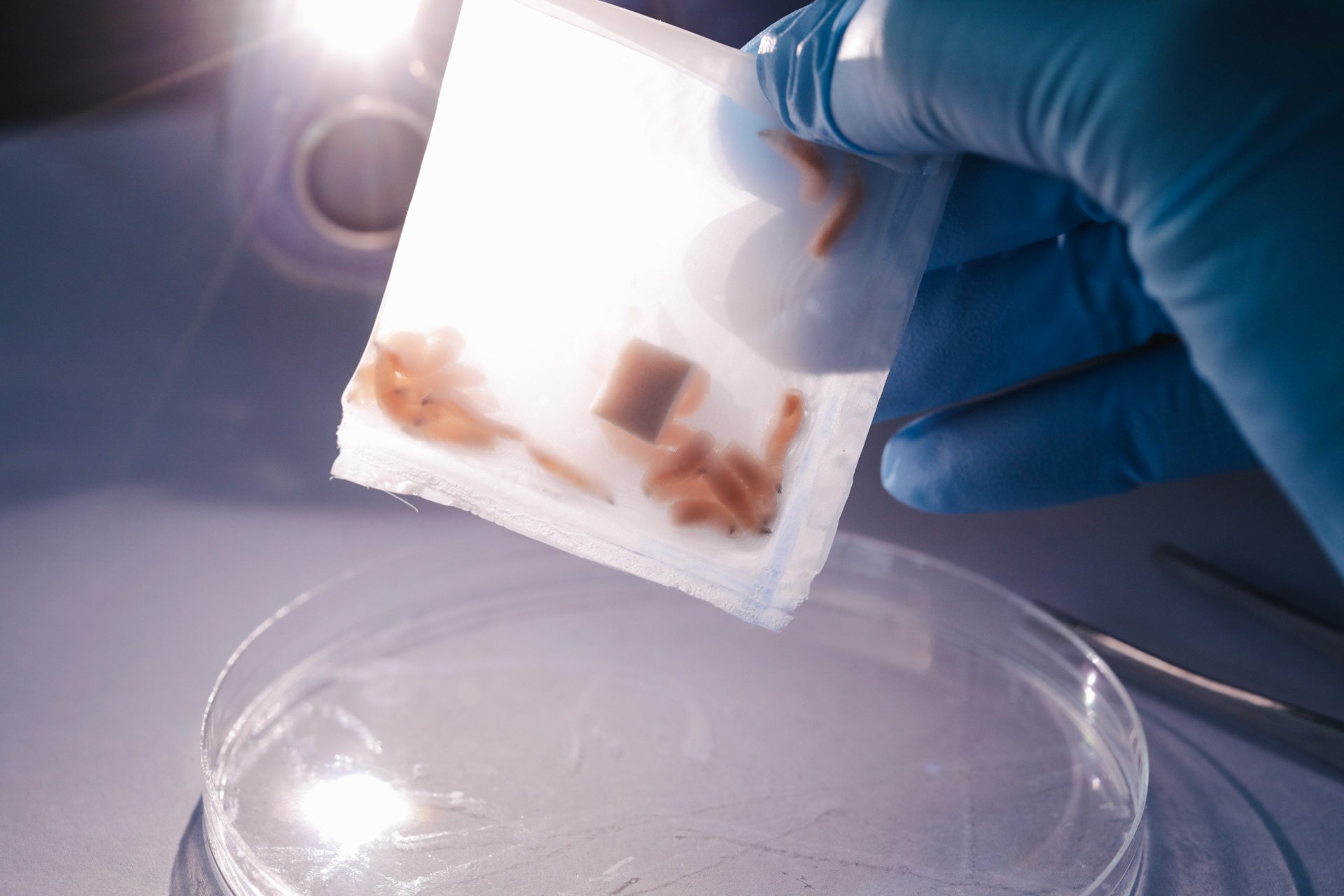
什麼 蛆蟲清創療法 &
怎麼能 MEDIFLY 説明?
按照自然的生物規律清潔傷口
蛆蟲清創療法(又稱 "蛆蟲療法 ")是利用無菌活性銅綠蠅幼蟲(俗稱 "綠頭蠅")來清除慢性傷口上的失活組織和細菌。蛆蟲會分泌酶,分解壞死組織,將其轉化為液體或半液體,然後將其吞食。在顯微鏡頭下,可以清晰看見蛆蟲會有選擇性地清除傷口中無法存活的組織和細菌。
MEDIFLY 是新加坡和香港唯一批准上市的醫用活性蛆蟲生物敷料
關於 MEDIFLY 中蛆蟲的簡要介紹
蛆蟲是需要氧氣和液化食物才能生存的生物
蛆沒有牙齒...只有“吸吮”部件
蛆蟲是化學工廠 - 它能分泌出一種強大的蛋白水解酶混合物,分解壞死組織,並在傷口表面移動時將其液化。
然後蛆蟲會“吸入”這些液化或半液化組織,吞食並消化它
蛆蟲酶只能液化包括 MRSA 在內的壞死組織,而不會破壞健康組織
蛆蟲還會從傷口攝取和消化失活組織中的細菌,這些細菌也會在腸道中攝入和消化
蛆蟲分泌具有固有抗菌活性的化學物質,有助於對抗感染
減少感染,減少炎症,促進傷口癒合
隆重介紹 - MEDIFLY新加坡和香港唯一批准上市的醫用活性蛆蟲生物敷料
蛆蟲療法的歷史
西元早期
幾個世紀以來,在不同的文化中,包括美國土著人、澳大利亞土著部落和中國人,都有利用蛆蟲來治療傷口的詳細記載。
16 - 18世紀
1557 年,安布羅斯·帕雷 (Ambrose Paré) 首次注意到在傷口中使用蛆蟲的有益效果。在治療拿破崙軍隊的戰鬥傷口時,拉雷男爵觀察到蛆蟲可以促進肉芽組織形成。
19世紀
在美國內戰期間,就有關於蛆蟲用於治療的記載。醫務官 J.F. Zacharias 醫生報告說:"蛆蟲在一天之內就能比我們所掌握的任何藥劑更好地清潔傷口......我確信我用蛆蟲救了很多人的命。”根據他的記錄,用蛆蟲治療的病人存活率很高。
1930s
骨科醫生威廉-貝爾(William Baer)改進了蛆蟲療法,使用無菌蛆蟲來防止幼蟲引起的傷口感染。這種療法越來越受歡迎,在 20 世紀 30 年代的北美和歐洲被廣泛用於治療慢性或感染性傷口。
1990s
20 世紀 90 年代後期,隨著抗生素耐藥性的增加,人們對蛆蟲及其在慢性傷口治療中的潛在用途重新產生了興趣。
目前
科普里納通過其 MEDIFLY 產品系列在新加坡和香港提供蛆蟲清創療法,不久還將在更多地區推出。
什麼可以 MEDIFLY 做慢性傷口嗎?
無需手術即可去除壞死組織
1
破壞細菌形成生物膜
2
破壞細菌形成生物膜
3
阻止傷口破裂,促進生長
4
增加傷口的血液供應
5
瞬間減少傷口氣味
6
我適合使用 MEDIFLY 嗎?
我們的 MEDIFLY 產品適用於難以癒合的壞死性皮膚和軟組織傷口的清創,包括但不限於:
糖尿病足潰瘍
在使用 MEDIFLY 之前
MEDIFLY 後
壓力性損傷
在使用 MEDIFLY 之前
MEDIFLY 後
截肢部位
在使用 MEDIFLY 之前
MEDIFLY 後
注:傷口出現紅色表明傷口癒合正處於進展階段,因為這標誌著新血管的形成和組織的再生,反映出人體正在努力修復和恢復受傷部位。
請諮詢您的醫護人員,以評估 MEDIFLY 是否適合您。
MEDIFLY 也可作為以下傷口的有效清創工具:
靜脈/缺血性潰瘍
惡性傷口
燒傷創面
慢性骨髓炎
創傷性傷口
如果傷口有以下情況,MEDIFLY 的治療效果尤其出色:
耐甲氧西林金黃色葡萄球菌 (MRSA) 感染
失活組織
生物膜
疼痛粘附的腐爛
Why Should I Choose MEDIFLY?
Patients select MEDIFLY as their chronic wound treatment of choice for many reasons:
(Click on each point below to read more)
-
Maggots clean wounds naturally by eating away dead tissue, cellular fragments and fluids from the wound. They release proteolytic enzymes that help break down damaged tissue into a semi-liquid form, which they can then easily ingest.
Multiple scientific studies have shown that Maggot Therapy is more effective and efficient in removing dead tissue than conventional treatments [Sherman, 2003; Mumcuoglu et al., 1999].
-
Maggots do not digest living human tissue. Maggots heal wounds by feeding on dead tissue and other substances that hinder your wound from healing, such as bacteria. Maggots do all this without damaging viable tissue, meaning they don’t touch the healthy tissue that your body needs to heal.
This selective process is one of the major advantages of maggot therapy, as it spares the healthy tissues necessary for healing.
Some of the science behind it: The secretions of maggots can only break down the extracellular matrix of devitalised tissue, cellular debris and exudate presented in sloughy/necrotic wounds [Cazander et al., 2009]. These enzymes are unable to break down healthy tissue [Nigam et al., 2006].
-
Keeping bacteria under control is crucial for wound healing. Elevated levels of bacteria increase the risk of chronic wound infection and inhibit healing [Armstrong et al., 2023].
Maggots are like tiny clean-up crews. They eat up harmful microbes and help wounds heal faster. Using maggots in healing can reduce infections and keep patients infection-free for longer [Shi et al. 2014].
Studies have shown that maggot secretions can effectively destroy a broad range of bacteria [Jaklic et al., 2008; Daeschlein et al., 2007].
In addition, maggots elevate the pH in wounds, which inhibit bacterial growth [Parnés et al., 2007].
-
Biofilms can cause long-lasting inflammation and stop wounds from healing properly [Davies et al., 2008]. They do this by providing a cozy spot for bacteria to grow, forming communities that are hard to get rid of [Pritchard et al., 2015].
Maggot therapy is a great way to deal with these biofilms. It can both stop them from forming and get rid of them.
The enzymes present in maggot secretions prevent the formation of new biofilm and break down any bacterial biofilm present on the wound bed for ingestion by the maggots. These enzymes also inhibit the formation of new biofilm [Cazander et al., 2008].
-
Multiple studies have proven that wounds like Diabetic Foot Ulcers and Pressure Ulcers heal faster and better with Maggot Therapy than with other treatments.
For example, a 2014 study discovered that using maggots on Diabetic Foot Ulcers and Pressure Ulcers led to quicker healing and better growth of healing tissue compared to regular dressings [Sherman, 2014].
This is because Maggot Therapy facilitates cell movement to cover the wound and reduces inflammation in the wound. This sets the stage for the wound to move on to the next healing phase [Horobin et al., 2005].
-
Maggots can help patients avoid imminent amputations.
Maggot Therapy is associated with a threefold lower amputation rate [Sherman, 2014].
It has a 74% success rate in complex diabetic foot wounds that had previously failed all prior conventional wound care [Marineau et al., 2011] and a 90.9% limb salvage rate in a patient population in Singapore [Yeo et al., 2022].
-
Maggots serve as natural wound cleaners. Their consumption of necrotic tissue, which emits unpleasant odors, contributes significantly to odor reduction. In tandem, maggots' consumption of bacteria-rich material indirectly diminishes odor production. Moreover, the enzymatic secretions released during their feeding process work to neutralize odor-causing compounds.
Several clinical studies support these observations, noting a significant decrease in offensive odor accompanying wounds treated with maggots [Mumcuoglu, 2001]
-
Maggot Therapy is relatively safe with minimal side effects aside from slight discomfort and light bleeding [Yeo et al., 2022]. Application of MEDIFLY should take a similar amount of time as traditional wound dressings.
-
Maggot Therapy succeeds about 80% of the time in making wounds better and fully cleaning them in just one treatment. In comparison, regular treatments only work for about 48% of patients [Gottrup et al., 2011].
-
Studies have demonstrated that Maggot Therapy is the most economical method for removing dead tissue from wounds. This is primarily because of its swiftness and high success rate in effectively removing debris, which leads to a reduced need for amputation, lower infection rates, fewer dressing changes, and reduced requirements for antibiotics and painkillers [Bennett et al., 2013].
What are some precautions of MEDIFLY?
MEDIFLY products should not be used on the following:
Wounds that are located close to an exposed major blood vessel
Patients that are on anticoagulants (e.g. Warfarin)
Wounds located close to exposed organs
Patients that have experienced adverse allergic or inflammatory responses to Maggot Debridement Therapy or its associated wound dressings in the past.
Don’t be alarmed if there is…
Increased exudate
Development of malodour
Discoloured exudate
Increase in pain
Light bleeding
What’s not normal…
Extreme, unbearable pain
Periwound skin irritation
Profuse bleeding
Please consult with a physician or other healthcare professional regarding any medical or health related diagnosis or treatment options.









